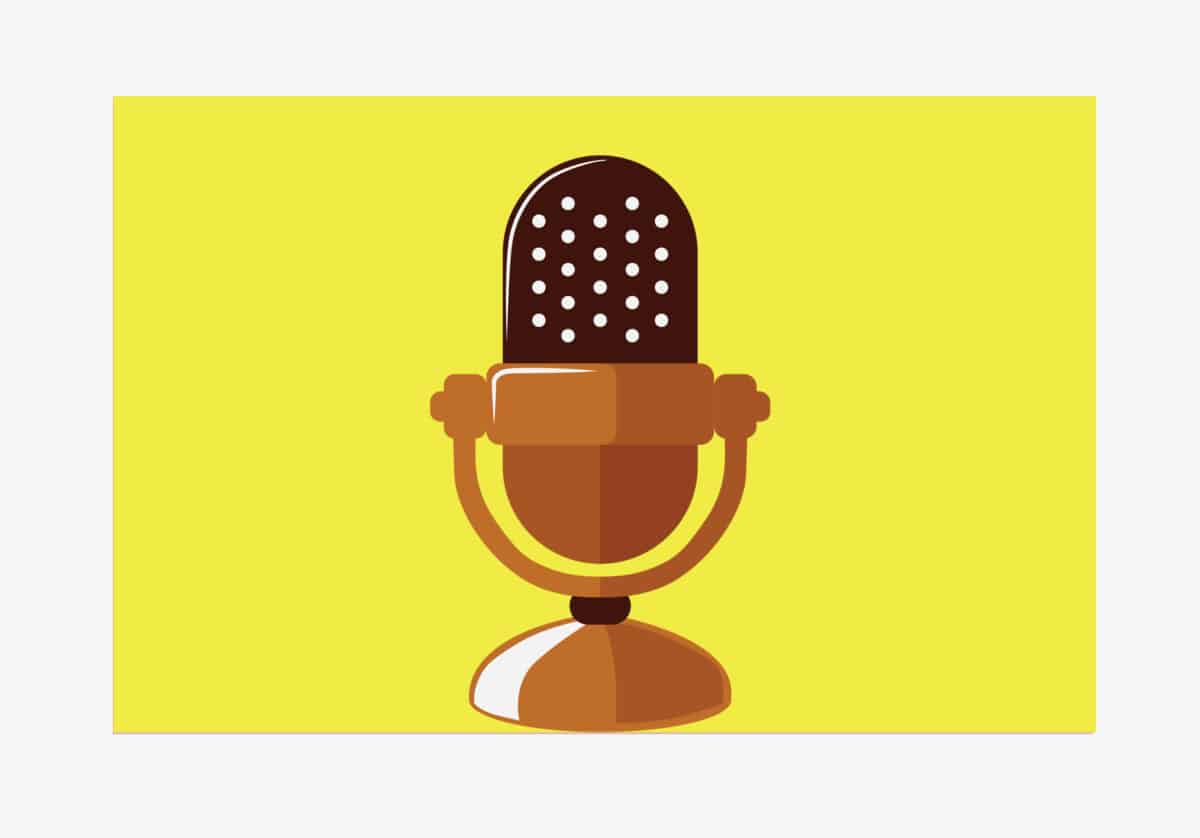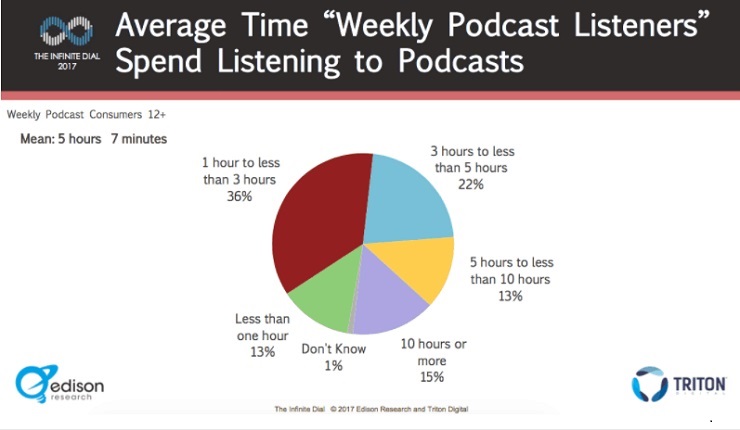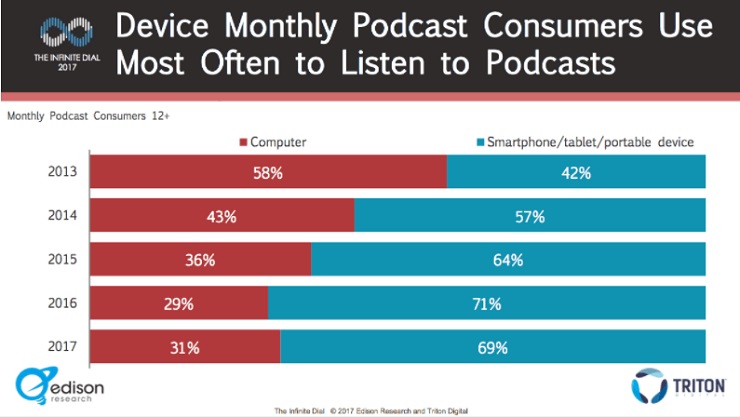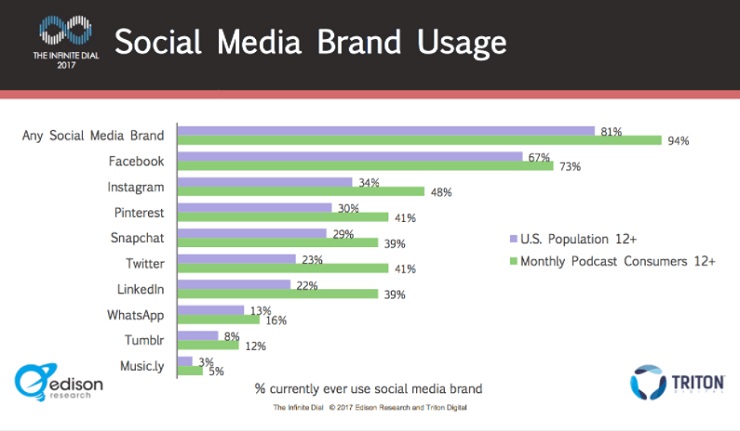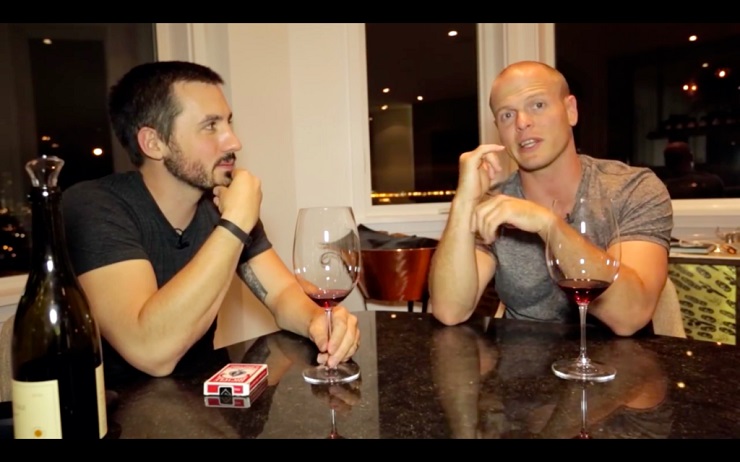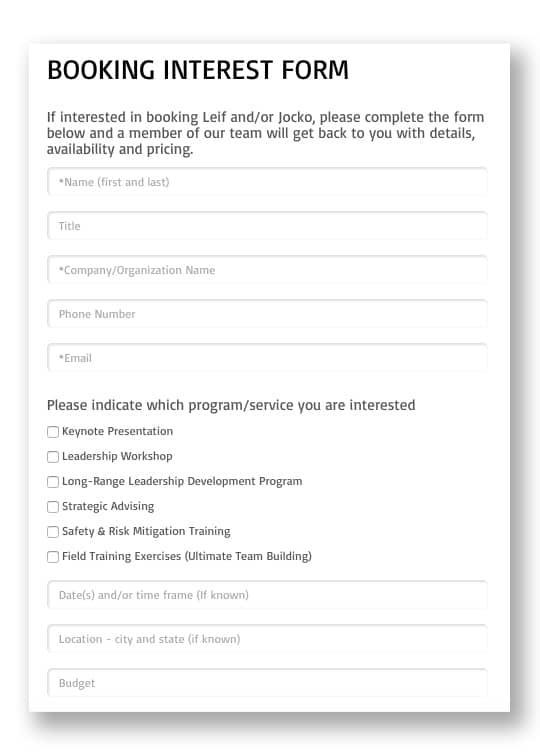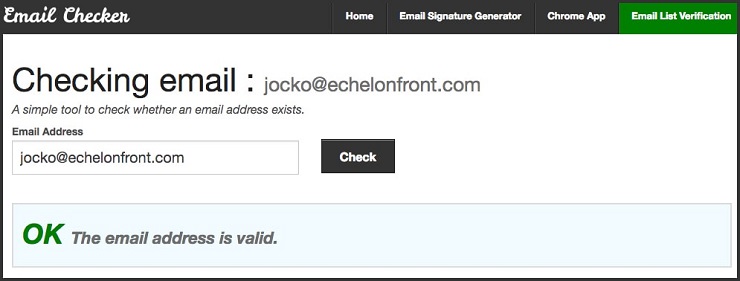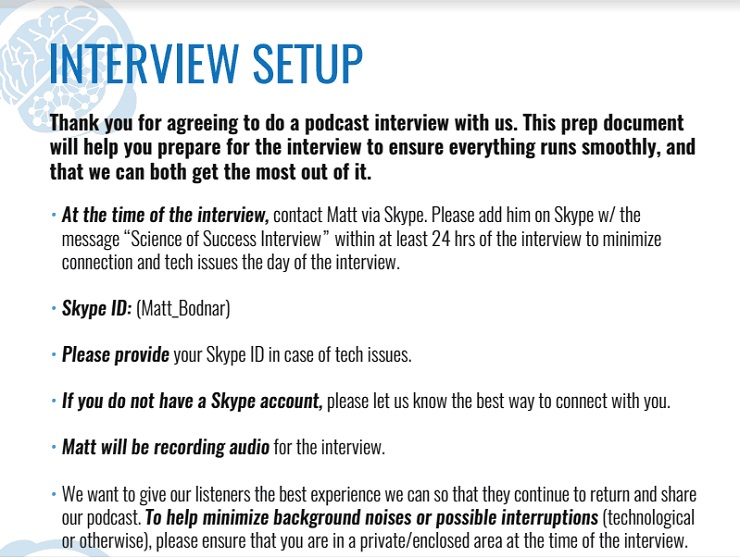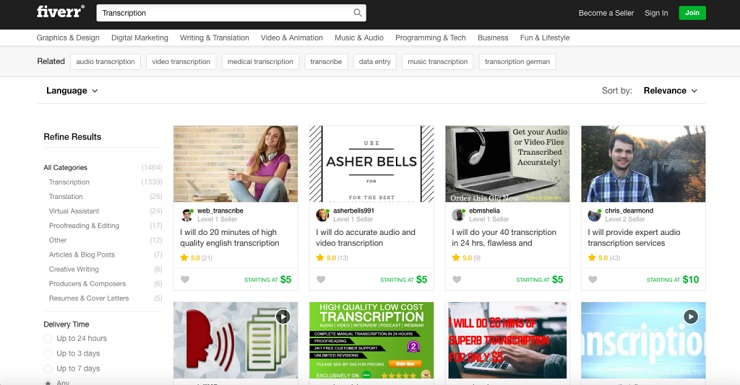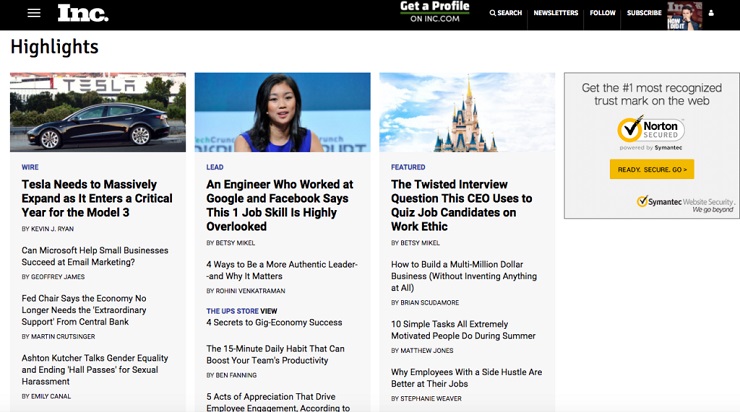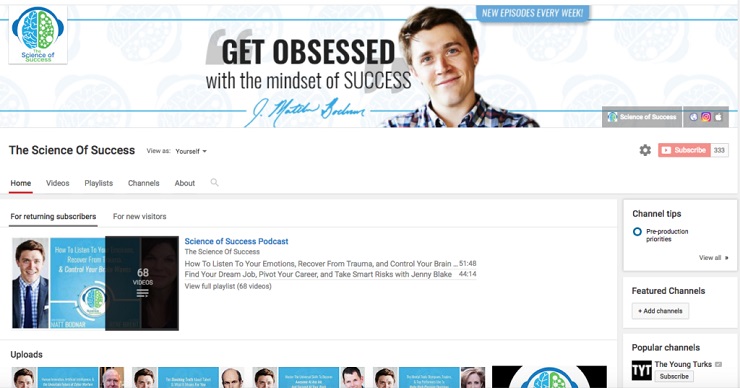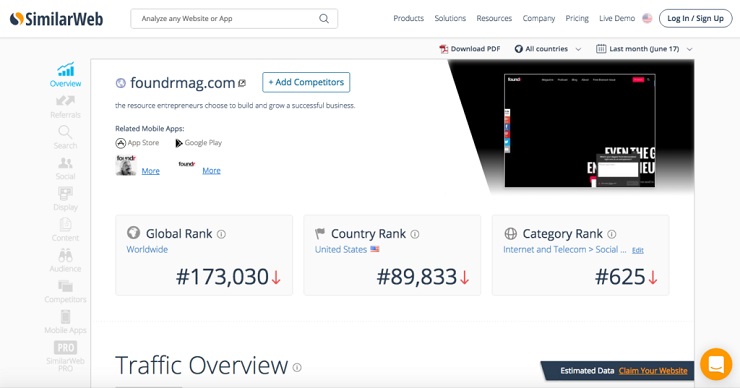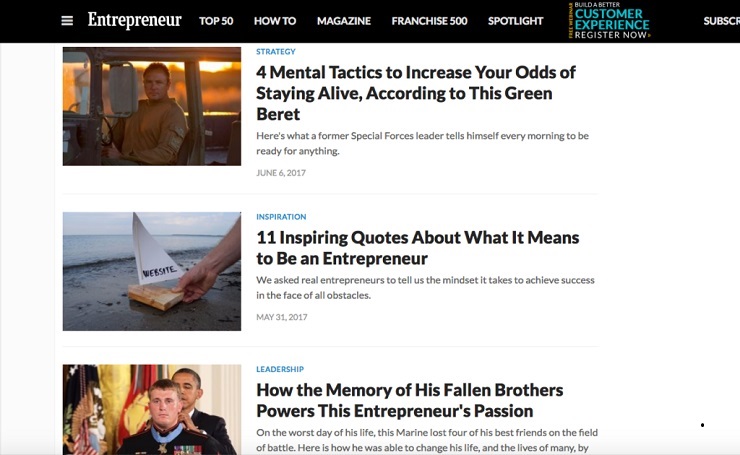Maybe you’ve started a podcast, have close to zero listeners, and are considering quitting. Or maybe you are just starting out and want to make sure your show is the best it can be. Maybe your podcast is doing awesome, but you’re always is looking to improve (good for you!). In any case, you’re in the right place.
In the following guide to podcasting, we’re going to teach you the tools, techniques, and tricks to conducting better interviews, finding better guests, getting past contact forms and gatekeepers, how to leverage others’ audiences to skyrocket your show’s popularity, and even some bonus tips.
This podcasting guide deals mostly with the ins and outs of podcast production (booking guests and interviewing) and the secrets to podcast promotion. If you’re a bit earlier on in the process, and you’re still debating what your show should be about or what equipment and software to use, then check out this Foundr post: Your 6-Point Checklist On Starting a Podcast On A Shoestring Budget. It, too, is a must-read.
You can also check the following video where Nathan, Foundr’s CEO and the man responsible for running our podcast, explains the must-have tools to run a successful podcast:
There’s lots to cover, so without further delay, let’s dig right in.
Table of Contents
There is an Audience Waiting to Hear From You
Jitters? Here’s How to Shine During Interviews
Finding And Booking Great Podcast Guests
Know Your Stuff – How to Prepare for the Interview
Extend Your Podcast’s Reach by Repurposing
The Right Way to Generate Buzz for Your Podcast
Bonus Tips!
There is an Audience Waiting to Hear From You
There has never been a better time to dive into the world of podcasting. It has never been easier to get your voice out there, spread your message, and build an audience.
Many are calling podcasting the future of storytelling, and with so many new people tuning in each week the end is nowhere in sight. Many are using podcasting as a way to help build their personal brands, their businesses, and simply to have a good time and be heard. At The Science of Success, we’ve built our audience to over 1 million downloads, and we want to help you do the same.
With hit shows in nearly every category, from science to politics, and even food—if you have a message or a story inside of you, there’s an audience out there willing to listen. A recent study from Edison shows that 24% of Americans (67 million) have listened to a podcast in the past month, and that number is continuing to rise. Of those monthly listeners, 42% actually listen to the entire podcast episode and spend an average of 5 hours and 7 minutes consuming podcast content!
Not only are listeners spending a lot of time with this medium, they are also consuming this content in a variety of ways: 69% of podcast content is consumed on a portable device, most commonly while walking, in the car, or generally on the go. That number is growing.
The consumers of this growing medium are also some of the most engaged on social media. That means the podcast consumer has a much higher chance of sharing and commenting on your content and becoming an engaged consumer versus a passive one.
With the medium growing so quickly, captivating audiences, and making some nice profit for those who do things right, if you have a brand and aren’t podcasting—you should be! Again, if you’re just looking to get started and need some tips on equipment, editing, and more, click here.
Once you have your podcast up and running, you’ll need to start building an audience. Content is always king! If you build it they will come, does not apply. But if you build it, with a few things in mind, and promote it properly using our methods, then they will come. I’m here to guide you towards creating good content, booking great guests, generating huge buzz for your show and episodes, layering content, and even some extras bonus tools and tactics.
Jitters? Here’s How to Shine During Interviews
Speaking into a microphone, and especially interviewing others, are developed skills for most people. The first time you get in front of the microphone, or book that guest you never dreamed you’d speak to, you’re probably going to be nervous and will potentially even stumble, and that’s OK!
The good news? You can and you WILL get better. Becoming completely comfortable behind a microphone takes time. However, by keeping these simple rules in mind while planning and while recording, you can begin to not only come off like a pro, but also begin to draw in your audience.
Be Yourself
I’m aware this may sound cliche, but it makes a big difference. People often have a BS detector and can sniff out a fake laugh or a fake connection between two people in audio recordings. This is your chance to show your audience who you really are and how you hold a conversation, which can strengthen that bond between you and your audience.
Even Tim Ferriss, who currently hosts one of the most popular podcasts on the iTunes store, admits to being nervous his first few times. Tim even resorted to having a few glasses of wine to calm his nerves during his first interview with Kevin Rose. He has come a long way since the beginning and so will you!
Tim Ferriss and Kevin Rose during Tim’s First Podcast
This also may be your first step into the ocean that is online content production. You may not have a blog started or even have a following at all, and that’s totally fine. Still strive to be yourself, and discuss things that you actually care about. It may be easy to see something that is current and newsworthy and try to become the next Pod Save America, but don’t. If politics is something that you truly care nothing about, you’ll find yourself burnt out in researching topics, finding talking points, and putting in the work. That goes for any topic.
Fortunately, there are hit shows surrounding nearly every topic from food, comedy, movies, and more, so finding your special twist on something you care about should not be too hard!
Ask Great Questions, of Your Guests, Yourself, and Your Audience
Great questions have several unique characteristics, and asking them is one of the most important skills, not only in podcasting, but in life in general. Being able to listen to someone as they speak and then steer the conversation and pull additional information can be the difference between a bland and uninteresting conversation and amazing content.
If you have guests on your show, be sure to research them extensively ahead of time. Many experts and popular figures have a loose script they stick to in most interviews or lectures. Asking good questions will get them outside of their comfort zones.
If you do not have guests on your show, you should still ask questions. Ask questions of yourself and then answer them on air. If you’re speaking on a current event or topic, ask yourself, “Why do I like this? Why is this important to you, my audience?” then answer yourself. This helps bring the audience into the conversation and also helps you expand on your points beyond face value.
Don’t forget to ask questions of your audience too. One of the special things about having a podcast audience is being able to interact with them. Ask them questions, “How do you all listening feel about this topic? Did you try this recipe? Tell us in the comments section or email us at [email protected].” This encourages listener engagement and engaged listeners can be an amazing source of feedback. Especially, as you grow your email list, if you’re good at engaging and responding, you’ll have a listener for life.
Here are a three quick tips on asking good questions:
- Ask Open Ended Questions – Try to never ask questions that can be simply answered with a “yes” or a “no.” These questions will rarely yield any insight or value to you or your audience. This also allows people to gloss over your question mentally and not really think about the answer as much as you or your audience may like.
- Ask “What” and “How” Questions – questions such as “What about this did you like?”, “What did you learn from this experience?”, or “How did you get this done?” Oftentimes, the real answers are a layer or two under what we would initially share. Use these questions to dig deeper.
- Master The Mirroring Technique – Taught to us by a 25-year veteran of the FBI, mirroring can be extremely powerful. Essentially, when someone gives you an answer that you wish provided more information, simply repeat roughly the last 4-6 words, or last idea they said in their sentence, and they will give up more information every time. Take this example:
- Guest: “To get someone to reveal more information, simply repeat the last 4-6 words of their sentence back to them.”
- You: “You repeat the last few words?”
- Guest: “Yeah, pretty cool right? What this does is it causes them to sort of continue their thought, which then reveals more information about what you are asking, digging deeper.”
Tell A Story Whenever Possible
The power of storytelling cannot be overemphasized. Telling great stories to your audience and asking insightful questions that encourage others to do the same not only makes your podcast more memorable, but also activates various areas of the listener’s brain. In some cases, the brain can even react to good storytelling in a way that mimics as if the listener was actually a part of the story themselves
Jennifer Aaker, a marketing professor at Stanford’s Graduate School of Business, conducted an experiment with her students to illustrate this point. She tasked 10 students to pitch the entire class for one minute. Out of the 10 students, nine used slides with facts and figures to make their points, while one used storytelling. Afterwards the students were required to write down everything they remembered about each pitch. In the end, only 5% of students were able to cite a statistic while 63% were able to recall the story they were told. Nonprofits have also used storytelling to effectively boost donations and inspire action.
Stay On Topic
Podcasting can be fun, especially when you do it with friends, you’re speaking to great guests, and you’ve become more comfortable on the mic. While it’s important to have fun, staying on topic is critical. It may sound hard to get off topic while recording a show, but once you feel comfortable and get into the right conversation, it can be easy to trail off from your main subject.
Don’t get me wrong, going somewhat off topic isn’t a bad thing. Not knowing when to reel things back in and keep the train on the tracks is. This will be a case-by-case basis, but if people tune in to your show expecting a certain type of insight or takeaway, you want to be sure to deliver on that expectation every episode.
Finding And Booking Great Podcast Guests
Not every hit podcast has to have guests. However, unless your listeners really love your personality and what you have to say, it helps to spice things up with an outside perspective, at least every now and again.
Also, inviting guests with large audiences to come on the show offers them a platform for their message, which typically means they will want to share it with their audience, allowing you to grow your reach. This also begins a relationship between you and the guest on some level, which down the road could lead to any number of opportunities.
What Makes A Great Guest?
It’s important when thinking of great guests for your show that you investigate why they may be a good fit. Doing research on the guest’s background and previous interviews may be time consuming, but ultimately will ensure they bring the thunder during your interview. We recommend minimally gauging potential guests on a few criteria:
- Knowledgeable – Is this guest an expert on the topic or topics you’d like to discuss? Have they done an interview on the topic before? Do they have an interest in this field? Think about if this is someone your audience is already going to have heard of. Or is this someone they may not know but may find their work informative, fascinating, or entertaining.
- Entertaining – Is this guest going to enjoy coming on the show and provide something to my listeners? Look into previous talks, take into account how they speak, if they tell jokes, and if they seem to enjoy interviews and discussions on the topic. If the guest is not an expert, they can often make up for it by having some basic knowledge, but also a funny or entertaining take on things.
- Relevant – There will always be experts and personalities who will never go out of style. Think of how George Clooney is to acting. These are always great guests, as they already have large and loyal audiences who will seek them out. But they can be hard to book, especially early on. So be on the lookout for new projects guests may have that you can help promote, which greatly boosts your chances of booking them. Also keep your ear to the ground and look for the latest and most cutting-edge newcomers to gain an edge on competitors.
How Do I Contact These Great Guests?
Many of the best guests can be hard to reach. Most people in the public eye have a website, but going through the “Contact” form can have a very slow response rate. You’re often unsure if the message really went through, and even when it does it may be sent to an assistant, who may ignore your request.
Luckily, we’re here to show you the tools you can use to avoid these pesky and indirect contact forms and open up the gates to any guest’s inbox you desire.
Hunter.io
Let’s say you are trying to get in touch with Jocko Willink. Jocko’s podcast, appropriately named Jocko Podcast has exploded in 2016/2017 and sits atop the iTunes charts. Jocko is also a best-selling author and runs a consulting group named Echelon Front. With all of these projects going on, Jocko does not display his personal email address anywhere obvious online.
By using Hunter.io, you can get a good feel of the email pattern for any company by typing in the domain name associated with the guest. Let’s use Jocko’s business website as an example. First, we just type in the domain:
Once we have typed in and searched the domain we will see each email address that has been verified somewhere online with the number of sources citing this address as valid. Based on these results, we are given the “most common pattern” which in most cases, is the correct email pattern. Here we see that the emails align with the pattern {First}@echelonfront.com. So based on this we have an idea that the email for Jocko is [email protected].
Email Checker
Now that we have what we believe is the email pattern for the person we want to reach, we need to test it. Using a service such as Email Checker allows us to cut out the guesswork once and for all and see if an email is actually valid, versus waiting for a bounce back or no reply.
Looks like this is indeed an active email address for Jocko Willink, so we can bypass the contact forms, and go straight to the inbox. Now that you have the keys to the castle and can get directly in touch, let’s go over some ground rules.
How To Communicate With Guests
So now that you know how to find virtually anyone’s email address using online tools, we need to set some protocols. Before you begin shooting out emails to every single person you’ve ever wanted to talk to, consider this. These folks typically get a lot of email and are very busy. It’s important to do everything you can in order to demonstrate the value that you can bring them by having them on your show. When reaching out to potential guests, stick to something similar to the outline below.
- Basic Research – Introduce yourself and let the guest know that you know who they are. What have they done that you’ve enjoyed or that interested you? Pull from the reasons you thought they would make a great guest and let them know.
- Current Project – Next, be sure to mention any of their latest or current projects you’re aware of. If they have something that they are looking to push, it greatly increases the likelihood of them coming on your show.
- The Ask – Tell them that based on all the above, you think they would be a great guest. Be sincere here, tell them what you’d like and how much value you think they would add to the show, the audience, and in promoting their work.
- What’s In It For Them? – Mention that you want to help them spread their message, work, story, or opinion. Be sure to list out the latest download count, audience statistics, and social media following to give them an idea of your reach, and show them what they have to gain.
- What Are We Talking About? – Give the potential guest an idea of what you’d like to touch on. Sometimes it’s even good to have an outline of questions lined up to share with them. Many influencers who run the podcast circuit get tired of people just wanting to hear the same thing over and over from them. Have a unique angle? Want to go deep on some life questions? Let them know what to expect.
- Thank them – ALWAYS. Thank people you are cold outreaching to (especially influencers) for taking the time to read your note. You’d be shocked how many people who are looking for an interview are blunt and make the ask without any courtesy. Don’t be that person; thank them for their time.
While no template or message will work every single time, the outline above has be proven and tested time and again to have a great response rate.
It can also be very helpful once a guest is booked to include a prep packet in an email. This should include your Skype handle, (or however the guest can best reach you), information on audio quality, and an emergency contact plan should anything need to be rescheduled or changed.
Note: While it’s absolutely necessary to be polite, do not be afraid to follow up in a few weeks if you never receive a response from a potential guest. Be sure to update your follower and download numbers (see spreadsheet below), always check for new projects they may be working on that you can mention, and reach out again. Several of the best guests we’ve had on the show agreed after more than 10 touches, while zero of them ever got mad for following up. As long as you’re respectful, most will actually admire your drive and determination.
Keep Your Guest Outreach Organized
When you find and book guests, we recommend placing them in a tracker.
On a budget, there is no reason to invest in a CRM or tracking tool. Most of what you need can be create in Google Drive. Keeping track of each guest on your wish list ensures you never forget to follow up and keep them up to date with your offer, audience statistics, and why you think they would be a good fit.
Know Your Stuff – How to Prepare for the Interview
So now that you’re an outreach master and booking the guests of your dreams, it’s time to do some pre-interview prep.
Of course, some prep work occurred before you even reached out to the guest. But now that they have agreed and you’ve got it blocked out on your calendar, it’s time to dive in deep. Typically you can hit all of your bases with a few basic searches. Follow the framework below to compile all of the necessary information into a Google Doc.
To ensure that all the bases are covered, you want to search and compile the following:
- Bio: Pull a bio for your guest to introduce them to your audience. This can vary widely from no-nonsense, to very untraditional depending on the flow and vibe of your show.
- Media: Google is your friend. Type their name in and go several pages deep, looking for previous interviews and relevant news. Compile links for all of this information and take loose notes so you can come back later if need be.
- Videos: Type the guest’s name into YouTube and see what you can find. Past interviews, news coverage, book reviews, all of these can be a great source of potential questions, insights, and material.
- Books: Search for the guest on Amazon and see if they have any published works. Be sure to check out the “Look Inside” section on each book page to get a sneak peek at the table of contents. These can provide some great insight if you haven’t read the guest’s work.
By compiling this information and taking notes as you go, you can begin to layout the topics that have been previously covered and what their general message is. This can help you begin to decide where you’d like to steer the conversation and what types of questions you want to ask. It can also help to get a feel for the guest’s demeanor and presence when it comes to speaking and interviews. Will you need to pull them out of their shell some or do they like to ramble? All of this can help you tailor the interview and be fully prepped ahead of time.
And if you need some tips on podcast equipment, editing, and more, click here.
Extend Your Podcast’s Reach by Repurposing
One of my favorite articles of 2016 was by Gary Vaynerchuk on content creation. Essentially, what Gary is getting at is that one piece of content is never just one piece of content. Things can be picked apart, adapted, tweaked, and so on to make entirely new pieces of content. Each different piece can be tailored for a slightly different audience or different medium. There are so many way to repurpose content, so continue to squeeze each piece for all of its juice.
Say you’ve completed the interview and now you have this great piece of audio content. It doesn’t have to stop there. In fact, if you’re going to maximize your reach it can’t stop there. As we move forward we are going to try to create as many different pieces of content based on your episodes as possible including:
- Transcripts
- Articles & Infographics
- Videos
We’ll get to the best ways to generate buzz around this content later in the post. For now, we’ll focus on the creation of the content.
Transcripts
One of the easiest ways to add another resource for yourself and another layer of value to your audience is to transcribe each episode. Transcription involves taking the audio version of your interview and converting it to text format. This can be done for free … if you do it yourself. I would NOT recommend this, due to the headache and time required. Luckily, this service is relatively inexpensive. There are several transcription services that are quite accurate and have decent turnaround times.
For newcomers and those on a bit of budget I would recommend getting to know a Fiverr contributor. Each service on Fiverr starts at $5, with various premiums offered at an incremental price increase. This is a great place to start for transcription services, audio editing, and even logo design for those on a budget.
The transcript allows your listeners to dive into your content in more detail, should they desire. This also gives you the opportunity to dissect and outline the interview, breaking off sections that could be used as their own pieces of content. For example, once diving into the transcript, you may begin to notice that the interview leads into several topics that could make their own articles, short videos, and infographics.
See the above example. When outlining and sectioning out the various topics hit on in our interviews, it helps to use two different colored pens. In the above, blue signifies an overarching topic idea while red breaks out the actual content and numbers the various points. So using this small example above, we can make a rough outline of a potential article.
Here is the outline I created based on the sample transcript above:
3 Steps Anyone Can Use To Overcome A Panic Attack
- Do nothing at all, just try not to react.
- Identify the emotions and feelings as panic and welcome them back in.
- Embrace the emotion and call for more of it.
As you begin to dissect each transcript, you’ll find you actually have a lot of material that could be used as additional content and even as potential news articles on some of your favorite sites and blogs. Again, we’ll get into pitching media outlets in the next section, but for now we’ll continue on to the various content types and mediums.
Articles
As you begin to section out these various components of each episode, start to think of interesting headlines and angles that you can use to create a newsy article. Take a look as some of the headlines and general writing styles of your favorite and most popular publications in your niche.
Notice that we see a lot of list-style posts. If we think that Inc. may be a good fit for something we dive into during this interview, try to bend your angle and message to fit with the type of content they typically post and that is shared most often. Outline each of these angles and include any quotes that fit from the interview as well. Once you have it all outlined, take a stab at writing the article, matching the style of the publication you’d like to see your piece on. Most likely, no reporter is going to simply copy paste this article and publish it when you send it their way. However, it does demonstrate that you care and took time to outline the article and condense it for them in an easy to ready way should they want to read it.
On that same note, it’s crucial to craft a compelling headline. Your article may be some of the best content ever written, but if it falls flat on the homepage or doesn’t catch anyones eyes, it may never be seen. There are several guidelines for developing a great headline as well as some free tools that will actually rate the quality of your headline.
Once you have your articles outlined, you’ve taken a stab at writing them, and you have a solid headline, set them aside for now. Our goal will be to have these potential articles catch the eye of a reporter and get your podcast featured.
In the event the article is not picked up, however, this will make a nice and easy piece of content for your blog or to blast out to your audience as a newsletter.
Infographics
Infographics can also be an extremely effective way of reaching your audience and are much more likely to be shared. The brain processes visuals 60,000 times faster than text alone. There was a time when Pinterest was seen as just a place for mostly women to collect their fantasy wedding venues and craft ideas. That is no longer the case. Pinterest has been making moves to target businesses to bring content to their site. Many infographics get tens of thousands of “pins” and can go viral extremely quickly.
You can create infographics on your own by signing up for a service such as Venngage, which provides several free templates to choose from. Also, once again, Fiverr Infographics can be purchased by those who are short on time or would prefer to have this done by someone else.
Videos
Many people are unaware of the fact that YouTube has more searches than Yahoo, Ask, Bing, and AOL combined. Only Google processes more searches. Video also can also be very helpful when it comes to SEO rankings. So finding a way to turn your content into video format is crucial to building an audience.
The simplest and easiest way to generate video content with your podcast is to use Skype video when recording. This creates a piece of video and audio content immediately when you record, and after some editing can be placed on your site and YouTube channel. By the way, every podcast should have a YouTube channel. It’s a great way to tag your content and make it easy to find, as well as link to your other content by using end cards. You can also add a customized welcome video for viewers who are discovering your content for the first time. This allows you to encourage them to subscribe, points them to your best content, or just lets you get personal and say hello!
While recording your episodes as video and posting them on your website and YouTube channel is the easiest way to create video content, some of the best content is made separately. By now, most people have seen what is called a “whiteboard video”. These videos film a hand with a pen or marker, writing on what looks like a whiteboard. They are often used for book reviews and business trailers and are great for engaging an audience and adding a storytelling element to your message.
In the past, these videos used to take countless hours and companies would have to pay high prices for the time to make them. Luckily, that is no longer the case. We’ve experimented with several different whiteboard video creation softwares and have found that VideoScribe is the clear winner. Not only is VideoScribe affordable, but it comes packed with several tutorials. The software itself is very intuitive and easy to figure out.
Using whiteboard videos allows you to take some of those various pieces of potential content you’ve identified in the transcripts and create something cool. Not only will you enjoy making and creating these videos, but they act as great teasers for the full episode. During the videos, be sure to tell the viewer what they will be learning up front and as soon as possible to hook them. Then be sure to provide them with some insights and key takeaways and promise them much more value if they check out the full episode at your website, iTunes, Soundcloud, or host.
Take the example above. This video points out five key takeaways we found in our interview with Tal Ben-Shahar on how to be happy. This was just a portion of the entire interview, but by providing this “trailer” to the episode that people can learn from, they are much more likely to visit our page and check out the full interview and other interviews as well.
Now that you have a few ways to repurpose your episodes under your belt, let’s look at how to put that content to work toward promoting your podcast.
The Right Way to Generate Buzz for Your Podcast
First rule of getting people to check out your podcast: Go where the eyes already are.
An audience is all about capturing attention, being in as many places as possible, bringing them to your content, and ultimately converting them into fans. Gone are the days when posting something creative would draw in an audience. Instead, we’re going to go where the eyes already are, as opposed to trying to bring them all to us.
This step requires some research, but once it’s done, the results will continue to add value. Take a look at your show, your content, and decide what niche it falls into. Where do you see similar content, and where do you see content that isn’t an exact fit but could be? Begin to take note of these sites and build a list of your top prospects and where you’d like to get your content featured. You can use tools such as SimilarWeb to analyze webpages and dive in deeper to confirm the page is indeed somewhere with high traffic.
Once you’ve decided where you’d like to get your content featured, it’s time to dive into each choice and find the best reporters to share it with.
The easiest way to do this is simply by scanning through the online publications and blogs you’ve decided to target. At this point, you should have a few sample articles written, quotes pulled, and some angles you’d like to hit identified.
Do you have an interview on the absolute best way to roast a chicken? Look for a blog or reporter who covers recipe and cooking topics. Maybe you have an interesting take on something cutting edge in technology. Find reporters who cover technology and have a similar style that fits your angle or the sample article you’ve written.
So let’s use a real life example. We came across a reporter who wrote the above articles—what can we see? This is just a screenshot but we can already tell this reporter likes to write about the military, has an interest in meaningful and impactful quotes, and doesn’t mind a list-style article. This would be a great fit if you were pitching lessons learned from a member of a military branch, the intelligence community, of even an entrepreneur with a flare for military discipline.
It’s important to note, it’s not a good idea to use a blanket approach. Try to individualize each email message to every reporter you send your potential story to. There’s no shortcut here. Get to know their writing, be sure it’s a good fit, and above all, be sincere.
Another approach to this method is to Google particular topics and find people who have written about the same thing you’re pitching. Did you cover the exact same thing? Or does your content shed some additional light on the topic they already covered? If it adds additional value, it’s worth sending your pitch on to the reporter and opening a dialogue on the topic.
Again, the idea here is to find places where there is already a captivated audience. This will take you much further than simply posting the content on your own blog. As you go, you’ll begin to develop relationships with certain reporters and influencers. You may even be asked to contribute yourself, once or regularly. As you develop these relationships, begin to tier the publications.
For example, if your story and article is not picked up by your largest target, give it a week and then send it elsewhere to a potentially smaller publication. If it isn’t picked up by then, post it on your own blog. Either way, never let a piece of content go to waste!
How To Pitch Reporters
Now that you’ve found some reporters who may be interested in your content, we can use the same email tools as above to find email patterns, test the email addresses, and get directly in touch. As I mentioned earlier, this will hopefully be an ongoing relationship, so be respectful.
There is no shortage of information out there on how to pitch a reporter. Some reporters will even publish tips and tricks on what they like and how to get a hold of them. A great hook is key, good quotes help, and a sample of your idea that they can read in under 10 seconds never hurts either.
Here is an example of an email I sent to a reporter:
Let’s examine the above, which led to a front page article on Entrepreneur and generated over 8,000 shares, based on a podcast episode with Chris Voss.
First, we created a custom headline that fits some of the content this reporter has liked in the past. It also grabs your attention (“FBI Negotiation Tactics You Can Use In Your Life”).
Next, we address a few of the previous articles written to explain why we think the story would be a good fit.
From there, we give a brief description of our content followed by several intriguing quotes, a link to the full audio and show notes, as well as some angles and article titles we like. Lastly, we attach the sample articles we wrote to demonstrate that we’ve put in some work.
Again, sincerity is everything. Reporters do a very important job and are very busy. Respect their time and profession by doing your research up front, and framing and condensing your message in a way that is compelling yet concise.
From then on, you wait. Once someone has gotten back to you, typically they will be seeking more information or will ask for you to hone in on one point and provide more detailed notes. It’s important to note as well that each reporter has their own specific way they like to be pitched. But by using the method above, you cover all of your bases and can tweak as necessary as the relationship develops.
Bonus Tips!
Here are a few extras that are small tweaks, but can make a big difference!
Tweet Worthy Graphics – During an interview, make a point to write down some of your favorite quotes from the interview. These can be deep, interesting, or controversial. Once the episode goes live on iTunes, reach out to the guest again, thank them, and let them know where they can find the episode with a link. In addition, take some of your favorite quotes, grab a picture from the internet, and try to create a cool graphic for them. This not only is a keepsake from coming on your show, but also dramatically increases the chances of them sharing the content, and thus the interview.
Leverage The Podcast Tribe – Most podcasters are happy to collaborate on content. Find some other hosts like yourself who have similar interests and see if you can collaborate on an infographic, a video, or even interview one another. This is a great way to tap into each other’s audiences, continue to grow, and build relationships with others in the field.
Syndication – One of the fastest ways to grow your audience is through syndication. This means partnering with a website or publication to be their featured podcast. For instance, Forbes has several podcasts that they send out to their audience. This guarantees downloads, but could mean losing some of your control over the content, ads, etc.
Conclusion
Whether you’re just starting out, or have been podcasting for a while, the tools and tricks in this guide to podcasting should help you make some adjustments that will pay off in quality and audience size.
Podcasting is a quickly growing medium with no end in sight. As more and more shows come onto the marketplace, these tactics will become increasingly important as you strive to set yourself apart, build a following, and generate income—all while having a great time.
We hope you got a lot out of this post and are fired up to transform and supercharge your podcast! Any questions we can answer on how to make a high-quality, successful podcast? Leave us a comment below!
